A strap wrench secures an item with a chain or strap and holds it tight so you may tighten or loosen it. They are available in a variety of sizes, materials, and styles to suit a wide range of requirements.
Strap wrenches are a great tool for any homeowner. They’re typically used for everyday tasks like jar opening, plumbing fixture loosening and tightening, and vehicle maintenance such as oil filter replacement. However, they can also be utilized to carry items or wrap a strap around a bundle of pipe or wood.
In this blog post, our experts will discuss the different ways you can use a strap wrench to get the job done!
What Is A Strap Wrench?
A strap wrench is a tool that uses a band or strap to grip and turn an object. This makes it ideal for gripping irregularly shaped objects, such as pipes or fittings.
It can be used to loosen or tighten bolts, nuts, and other fasteners [1].
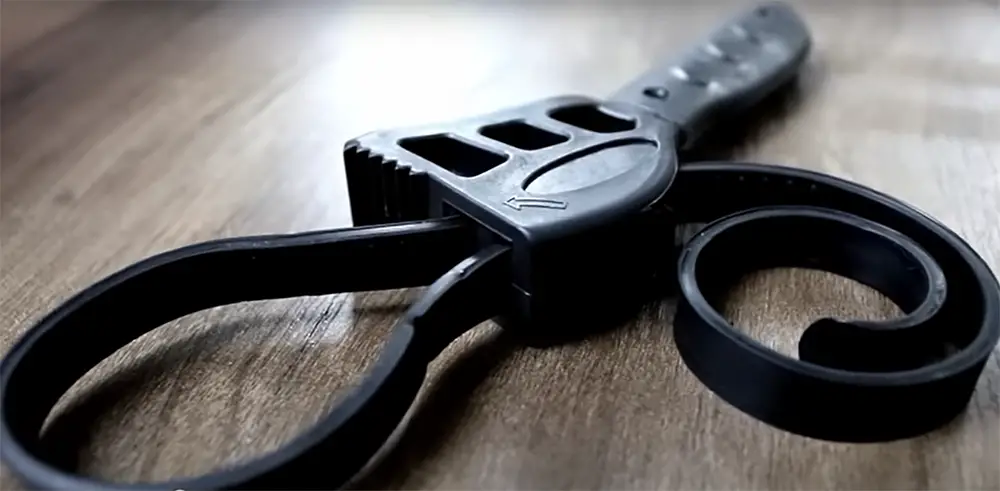
A strap wrench is a tool that secures items by tightening straps. They rely on friction to keep things from slipping. Strap wrenches are available with handles so you can have a secure grip while using them. If they don’t have a handle, it’s meant to be used with the square drive on ratchet wrenches. Rubber belts are utilized in strap wrenches, so whatever you’re working on is unlikely to be damaged or worn away. Belts can be adjusted to accommodate a wide range of items.
Types of Strap Wrenches
There are 3 types of strap wrenches, and they all work slightly differently. The first type is the most common and is often used for plumbing jobs. It has a ratchet mechanism that allows you to tighten or loosen a pipe without having to remove the wrench from the pipe.
The second type of strap wrench is similar to the first, but it does not have a ratchet mechanism. This means that you will have to remove the wrench from the pipe after each turn. This can be more time-consuming, but it may be necessary if you are working with very small pipes.
The third type of strap wrench is called a torque wrench. This type of wrench is used to apply torque to a bolt or nut without overtightening it. This is important when working with delicate materials or components.
The majority of strap wrenches can be classified by [2]:
- Strap materials. The most frequent materials are nylon, rubber, and metal chain. Soft materials are ideal for releasing or tightening objects that you don’t want to damage, such as plumbing fixtures or trapped jar lids. Metal strap wrenches, on the other hand, have a more aggressive “bite” into the surface of the material. These usually leave a mark, but they usually accomplish their objective. A metal chain strap wrench is not to be confused with a soil stack cutter! Despite their resemblance, a soil stack cutter (also known as a pipe cracker) breaks cast iron or ceramic soil stack pipes into small sections for simple removal;
- Integrated handle vs. compact. Some strap wrenches have a built-in handle that allows you to tighten the strap loop while cranking. Others need a socket tool such as a driver or ratchet to tighten and crank. These tiny strap wrenches are more compact than others. They are smaller than those with handles because they lack a handle;
- Oil filter vs. general use. Wrenches for changing the oil filter strap on most vehicles are available in a variety of sizes, but this isn’t always the case. Metal bands with a solid structure are generally more limited in size, while nylon straps have a wider range. Before making your purchase, verify the strap’s dimensions;
When to Use A Strap Wrench?
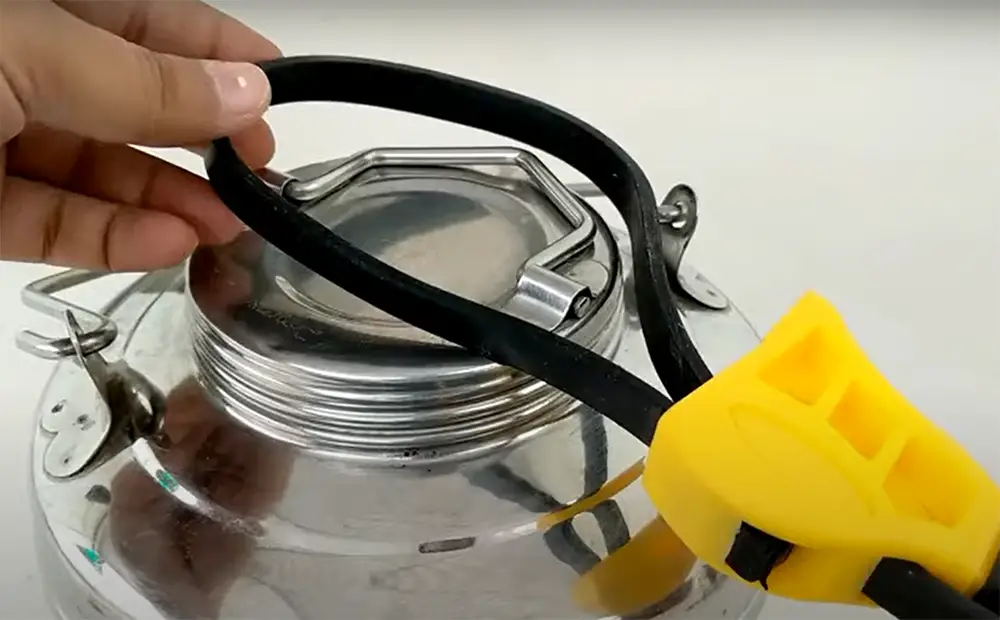
Strap wrenches are a versatile tool that can be used for a variety of tasks. With a little bit of practice, you should be able to use a strap wrench for most of your plumbing needs. However, there are some situations where a different type of wrench may be more appropriate [3].
For example, if you need to apply a lot of torque to a bolt or nut, you may want to use a torque wrench instead of a strap wrench. Additionally, if you are working with very small pipes, you may find it easier to use a regular wrench instead of a strap wrench.
You may use strap wrenches for just about any household DIY project. That means you can use strap wrenches to twist pipes and pretty much anything else that’s cylindrical. However, you’ll most often utilize it to loosen or remove things.
In general, strap wrenches are best for tasks that require moderate amounts of torque and for situations where you cannot or do not want to remove the wrench from the object after each turn. With a little bit of practice, you should be able to use a strap wrench for most of your plumbing needs.
Now that you know the basics of how to use a strap wrench, you should be able to tackle most plumbing tasks with ease.
How To Use A Strap Wrench:
1) Loop Straps
When you get your strap wrench, it will come out of the box in a loose state. You can then employ the strap wrench to wrap the cylinder, tube, or polished pipe that you are attempting to remove around.
The strap wrenches should not harm the product you are attempting to rotate when made of materials like rubber.
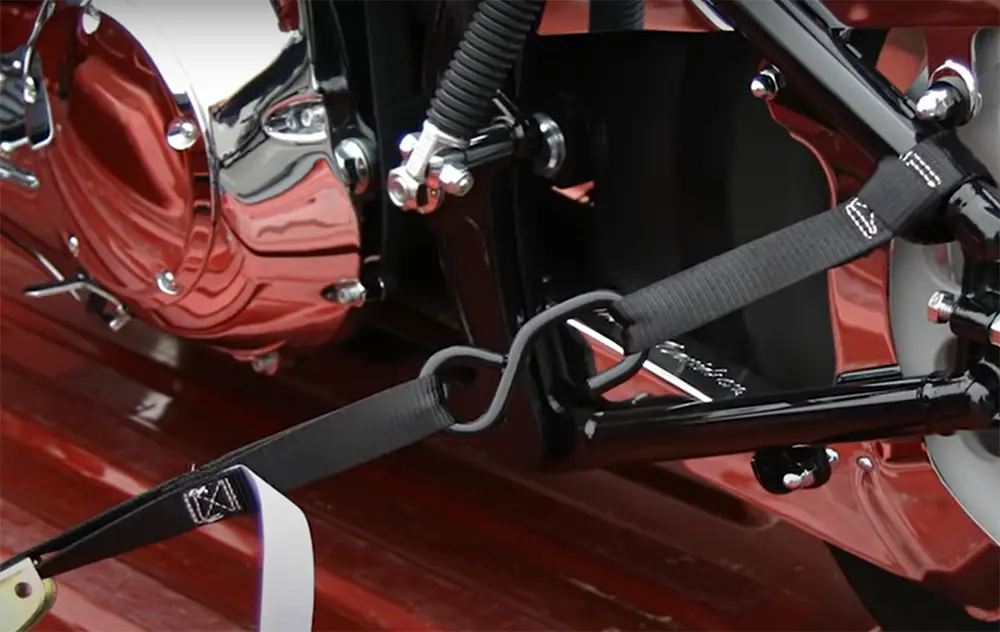
However, you should think about whether the material you’re attempting to change is hot. If the outer surface is hot and liable to burn your strap wrench, it’s a good idea to make sure it’s cool before proceeding. We’ve seen these hot pipes in factories before, and they can ruin the wrench [4].
2) Adjust Straps
After you have looped the straps around the object, you will want to adjust them. This is done by pulling or pushing on the handles of the strap wrench. By doing this, you can make the straps tighter or looser.
The reason why you would want to adjust the straps is that if they are too loose, then the object might slip out of the wrench. If they are too tight, then it might be difficult to turn the object.
If you inspect your strap wrench more closely, you’ll notice wedges that keep the strap wrench in position while performing modifications.
If this ridge were absent, the strap would loosen as you work. So make sure the strap is firm and that it is effectively fastened to the location where it belongs.
3) Turn The Handle
Now that you have your strap wrench in the correct position, you can turn the handle. Doing this will rotate the object that is attached to the other end of the strap wrench.
You can turn the handle in either direction. The direction you choose to turn will depend on what you are trying to do with the object.
For example, if you are trying to remove a cap from a jar, then you would want to turn the handle in a counter-clockwise direction.
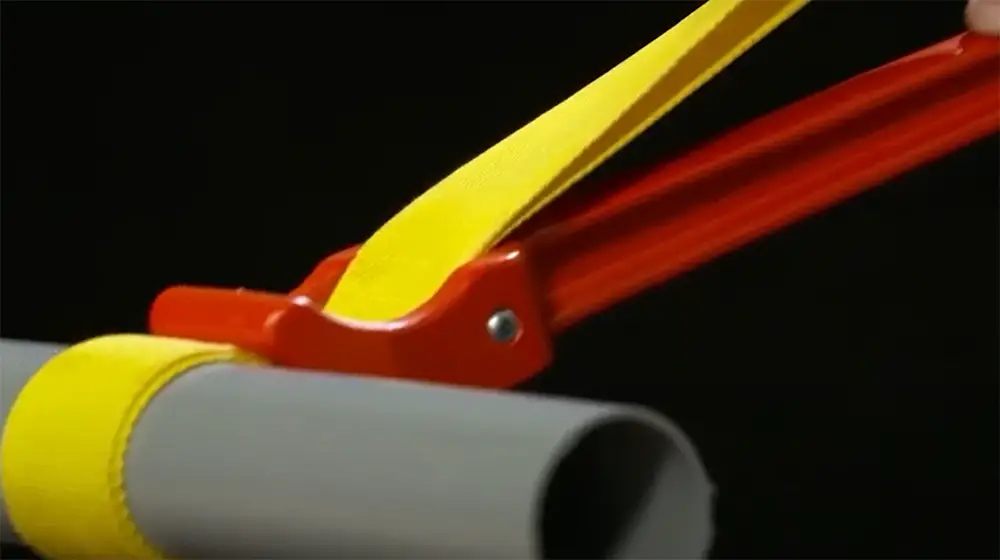
On the other hand, if you are trying to tighten a bolt, then you would want to turn the handle in a clockwise direction.
The strap, in effect, resembles a pulley. The wrench slips off from time to time when applying torque. You may simply adjust it and return it to its original position as needed.
Pressure is not just scary, it’s also painful. Remember that this is why you’re using a strap wrench in the first place.
4) Troubleshooting
The strap wrench may not be enough to pry up a difficult pipe or tube. If this is the case, apply grease or oil around the area that appears to be immobile.
If you can lubricate the region, the strap wrench is more likely to complete the task of removing your stuck piece.
Strap wrenches offer a high level of tension in tight spots; however, using a little oil or lubricant might help to speed things up.
If you’re still having trouble, then you might need to use a different wrench altogether. There are many different types of wrenches, and each one is designed for a specific purpose.
Or, you might need to use two strap wrenches at the same time. This is often necessary when removing large objects.
Using two strap wrenches will give you more leverage and make it easier to remove the object.
Supplies Needed To Use A Strap Wrench:
- Pipe or another cylindrical object;
- Rubber band or rope (optional);
- Towel or rag (optional);
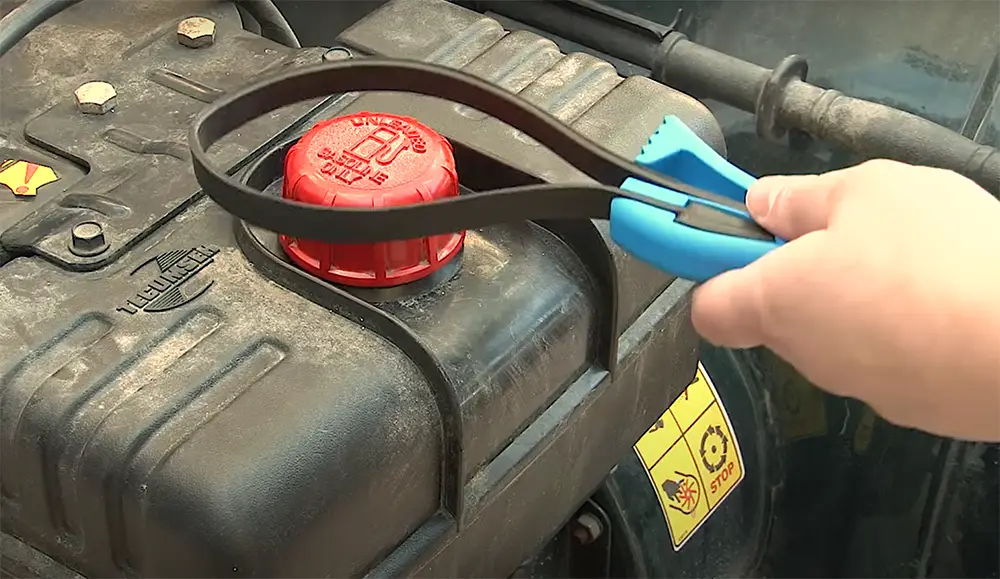
Here is how you should use these supplies:
1) Take your strap wrench and place it around the pipe
Make sure that the pipe is in the center of the wrench for best results. If your pipe is particularly slippery, you may need to use a rubber band or rope to secure the wrench in place.
2) Place your other hand on the handle of the wrench
Use your other hand to place pressure on the handle of the wrench in the opposite direction that you want to turn the pipe. For example, if you’re trying to loosen a nut, you would place your hand on the handle and push it down.
3) If the pipe won’t turn, try placing a towel or rag around it
If the pipe still won’t budge, try placing a towel or rag around it. This will give you more traction and make it easier to turn.
Once you’ve loosened or tightened the nut as much as you need, remove the wrench and set it aside. Be careful not to over-tighten or loosen the nut, as this can cause damage.
How to Choose A Strap Wrench:
1) Strap Width
The width of the strap is important because it will determine how much contact area the wrench has with the object you are trying to turn.
A wider strap will distribute the force over a larger area and is less likely to slip.
A narrower strap will have more contact with the object and is more likely to slip.
Choose a width that is appropriate for the size of the object you are trying to turn. If you are unsure, choose a wider strap. Widths are typically measured in inches or millimeters (mm).
Most strap wrenches come in two sizes:
- The large size is usually about 12 inches (300 mm) wide and can be used on objects up to about 12” (300 mm) in diameter;
- The smaller size is usually about 18 inches (450 mm) wide and can be used on objects up to about 18” (450 mm) in diameter;
2) Length
3) Diameter/Collar
The size of the wrench “collar” is important, as you need one that will fit snugly around the object you’re trying to turn. The diameter is listed first, followed by the width of the collar (the part that actually touches the object). For example, a common size is 13/16″ x 21/32″.
4) Friction
The more friction you can create, the tighter the grip will be. This is why it’s important to use a material that won’t slip, like nylon. If you’re still having trouble getting a tight grip, try wetting the surface of the object you’re trying to turn. This will help create more friction and make it easier to turn.
5) Handle
There are two main types of strap wrenches: those with handles, and those without. Handle-free wrenches are simply the length of the strap with a buckle on one end. You slip this over the object, then pull on the other end of the strap to tighten it. These work best for large, smooth objects like pipes.
Wrenches with handles have a grip on one end and an adjustable loop on the other.
You slip the loop over the object, then use the handle to twist the wrench and tighten or loosen the strap.
These work best for smaller objects or those with a textured surface.
Strapping wrenches come in a variety of sizes, and if you’re working on removing a big cylinder, you’ll need a huge strap wrench with the strength to handle it. Also, the straps on the strap wrenches are sometimes replaceable, while other times they are not [5].
FAQ:
How do I use a Husky strap wrench?
The strap wrench is used to loosen or tighten an object by wrapping the strap around it. Pull the rubber band on until you’ve achieved a good fit, then twist the handle in the required direction [6].
How do you use a flywheel strap wrench [7]:
- The first thing you need to do is identify which way the flywheel needs to rotate in order to loosen the nut. This can be done by looking at the manufacturer’s specifications or by finding a diagram of the engine online;
- Once you have determined which way the flywheel needs to rotate, place the strap wrench around the flywheel and position it so that the handle is pointing in the correct direction;
- Then, simply pull on the handle of the wrench until the nut loosens. Be sure to keep your hand close to the flywheel in case it suddenly breaks free from the nut; otherwise, you could get injured;
- Finally, once the nut has been loosened, remove it completely by hand and then proceed with whatever maintenance task you were performing;
How do you use a heavy-duty strap wrench?
To use a heavy-duty strap wrench:
- At first, you need to determine the size of the band or strap needed to grip the object. The band should be made of a durable material such as nylon or polyester. If it is too small, it may slip off the object. If it is too large, it may not provide enough gripping power;
- Next, you need to attach the band or strap to the wrench. Make sure that the band is tight against the body of the wrench. Otherwise, it may slip when you try to turn the object;
- Finally, you can use the wrench to turn the object. To loosen an object, turn the wrench counterclockwise. To tighten an object, turn the wrench clockwise;
If you need more gripping power, you can use a second strap wrench. This will give you extra leverage to loosen or tighten the object. With two strap wrenches, you can also turn objects that are too large to grip with one wrench.
For example, if you need to remove a large nut from a pipe, you can put one strap wrench on the nut and another on the pipe. Then, turn the wrenches in opposite directions to loosen the nut.
How do you use a Craftsman rubber strap wrench?
Here are a few tips on how to use a Craftsman rubber strap wrench:
- To use a strap wrench, first select the appropriate size for the job at hand;
- Next, place the chain or strap around the object you wish to secure, and thread it through the handle of the wrench;
- Tighten the handles of the wrench until it is snug against the object;
- To loosen an object, simply reverse the process by loosening the handles of the wrench;
- Remember to always use caution when working with tools, and never exceed the recommended capacity of your strap wrench;
What can I use instead of a strap wrench?
A strap wrench is a handy tool that can be used for a variety of tasks, from loosening bolts to removing lids from jars. But what do you do if you don’t have one?
Here are a few ideas [8]:
- Use a piece of cloth or rope. Loop it around the object you need to loosen or remove, and then twist the ends in opposite directions;
- If the object is small enough, try using pliers. Grip it tightly and then turn it in the direction you want it to go;
- Use a regular wrench. If the object is big and you have enough space, a regular wrench should do the trick. Just be careful not to strip the head of the bolt or nut;
How do you tighten a ratchet strap?
If you need to tighten a ratchet strap, first make sure that the ratchet is in the unlocked position. Then, feed the strap through the ratchet and pull it tight. Finally, lock the ratchet so that the strap stays in place [9].
How do you release a strap?
To release a strap, simply loosen the tension by turning the knob counterclockwise. Then, pull the strap through the housing and release it from the jaws. Finally, return the knob to its original position.
What is a strap wrench best for?
You can use a strap wrench to grip and turn objects that are difficult to reach. For example, if you need to remove a bolt from the back of an engine, you can put the strap around the bolt and then twist the wrench [10].
Remember, when using a strap wrench, be sure to choose the right size band or strap for your object. In addition, always make sure that the band is tight against the body of the wrench. This will help prevent slips and accidents.
Useful Video: How to Use a Strap Wrench
References:
- https://tameson.com/strap-wrench.html
- https://www.familyhandyman.com/article/strap-wrench-guide
- https://images.homedepot-static.com/catalog/pdfImages/66/66eba195-13b8-41f2-a119-9f72d97d8c5a.pdf
- https://www.journeymanhq.com/5314/how-to-use-a-strap-wrench/
- https://www.journeymanhq.com/5314/how-to-use-a-strap-wrench/
- https://toolguyd.com/diy-tools-strap-wrench/
- https://www.drawingthehouse.com/how-to-use-a-strap-wrench/
- https://neohandyman.com/how-to-improvise-a-strap-wrench/
- https://www.wikihow.com/Use-Ratchet-Straps
- https://olsatools.com/blog/strap-wrench-buying-guide






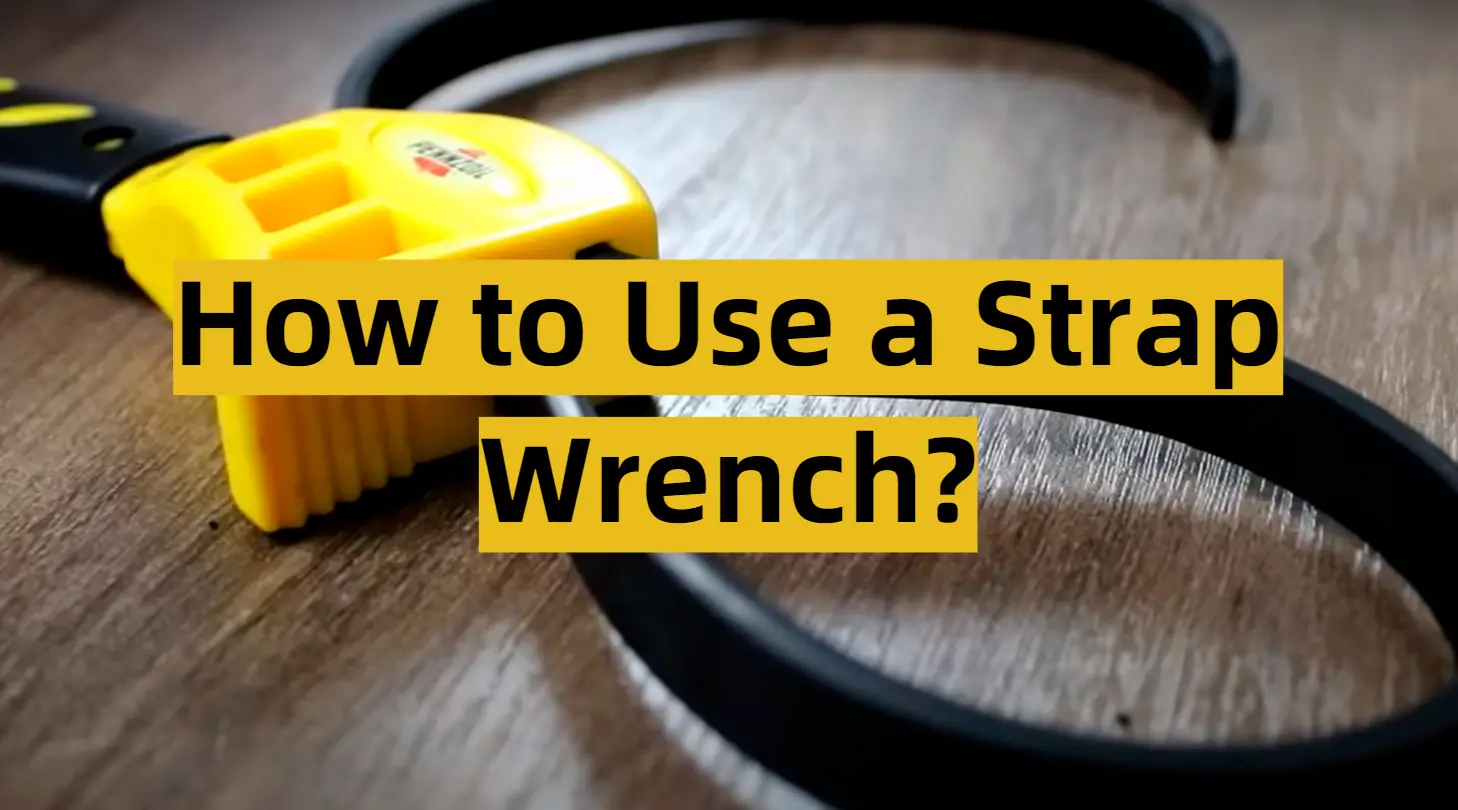
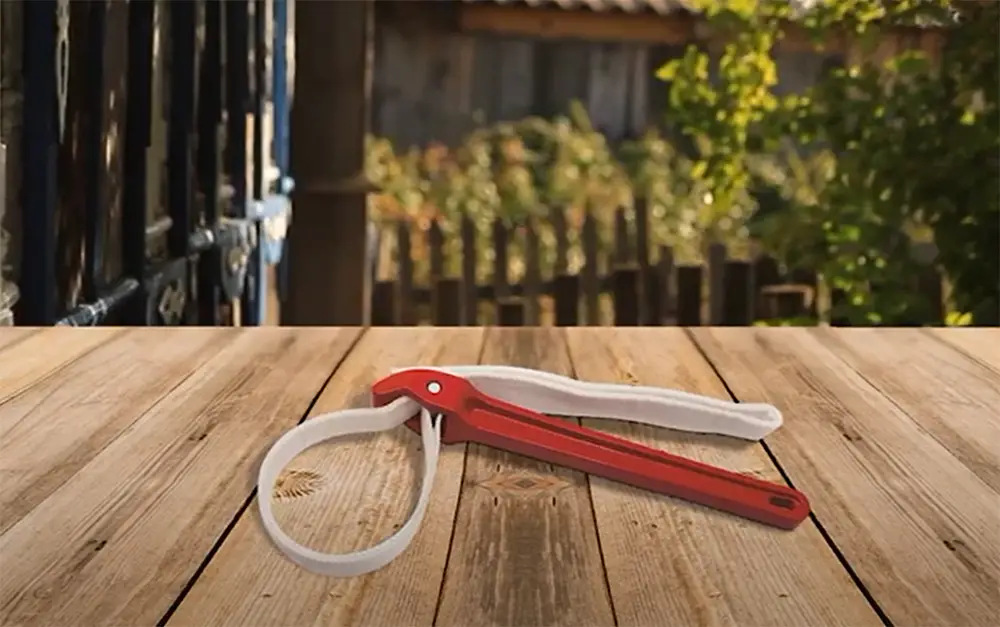





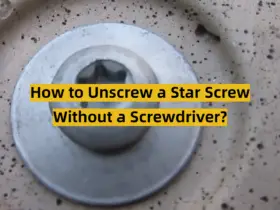
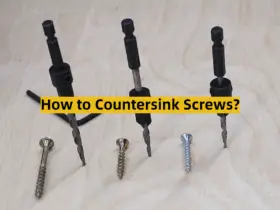
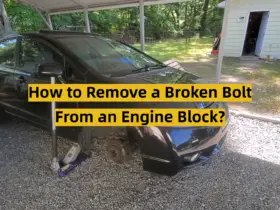
Leave a Reply